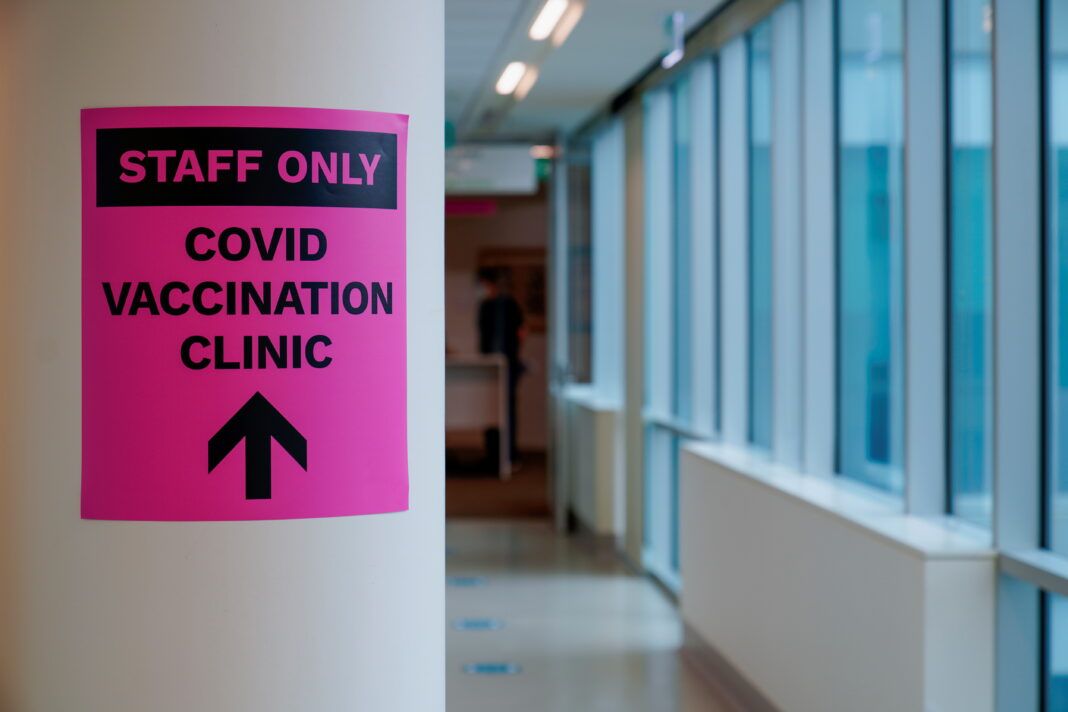COVID-19 numbers are declining in the US and countries around the world

A few minutes every morning is all you need.
Stay up to date on the world's Headlines and Human Stories. It's fun, it's factual, it's fluff-free.
Some experts fear the declining numbers may be an illusion caused by the severe winter storms that have gripped much of the country.
Earlier this week, the United States passed 500,000 deaths from COVID-19, a grim milestone the lasting impact of which will be felt for years to come. It has been just over a year since the first official deaths from the virus occurred in the US and in that time the world has experienced brief valleys and devastating peaks in the number of infections and deaths.
Despite the catastrophic numbers and even though Dr. Anthony Fauci has cautioned that normalcy is still months away, there are positive indicators that the pandemic could be waning. The number of daily US coronavirus cases has been on a steady decline since the beginning of the year, while daily deaths are also trending down.
Some of the worst hit countries around the world, including the United Kingdom and Spain, have also experienced a decline in daily cases and deaths. As more people get vaccinated, that trend is likely to continue. It will still be months before most people have received their second shot for effective inoculation, but in the meantime many countries have ramped up their social restrictions.
However, with millions of Americans saying they will not get the vaccine and vaccine misinformation spreading globally, achieving herd immunity and officially bringing the pandemic to an end may still be out of reach for the foreseeable future.
COVID-19 cases in the US
On Monday, February 22, US President Joe Biden memorialized the nation’s 500,000 COVID deaths with a brief speech and a moment of silence. It was a solemn occasion, at which Biden noted, “That’s more Americans who’ve died in one year in this pandemic than in World War I, World War II, and the Vietnam War combined. That’s more lives lost to this virus than any other nation on Earth.”
Though the severity of this milestone is hard to ignore, it comes at a time when new daily US coronavirus cases have reached a low not seen since October 2020. On both February 21 and 22, the number of new cases was around 59,000, down from a peak of over 300,000 in early January. The weekly average is nearly a quarter of what it was in the second week of January.
Likewise, COVID-related deaths on Monday were 1,374, a tragic number, but considerably lower than January when daily deaths from the virus surpassed 4,000 on multiple days.
The exact reasons COVID-19 cases are declining in the US isn’t clear, but it seems unlikely that they can be credited to the vaccine. At least, not yet. Only around 6% of the country’s population has received two shots of the vaccine (less than 14% have received just one shot) and since the vaccines being distributed in the US require two doses for full effectiveness, their effects likely haven’t been felt on a macro level.
Instead, some experts fear the declining numbers may be an illusion caused by the severe winter storms that have gripped much of the country. The bad weather has forced some testing sites to close and many people to stay indoors.
If people aren’t going out due to the weather conditions, that is effectively enforcing the social distancing guidelines that medical experts have been recommending. As a result, the decline in cases may be a matter of less testing, but it also may be a result of people staying home and not socializing.
Additionally, the decline in COVID-19 cases is not solely a US phenomenon. On February 16, the World Health Organization reported a 16% global decline in new cases compared to the previous week, as well as a 10% decline in global deaths. It’s not the first time global cases have been in decline, but the drop does appear to be the steepest and most sustained since the pandemic began.
COVID-19 cases in Europe
The UK and Spain have been two of the hardest hit countries in Europe, with the UK having surpassed 4.1 million cases and 120,000 deaths and Spain nearing 3.2 million cases and 68,000 deaths. Like the US, both countries reached a peak in early January and have been experiencing weekly declines ever since.
With cases rising after Christmas, the UK entered its third and most severe lockdown on January 6. The lockdown included strict stay-at-home orders and school closures throughout the country, with trips outdoors limited to essential tasks and exercise.
A month and a half into the lockdown, UK Prime Minister Boris Johnson is saying he’s “optimistic” the country could fully reopen as of June 21. It is an ambitious plan, to say the least. Johnson has cautioned that the June reopening date is only a tentative timeline, but his efforts to temper excitement has not kept people in the country from preemptively celebrating the date.
One thing the UK has working in its favor is an effective vaccine rollout. A fourth of the population has already received the first dose, making it the country with the most successful large scale vaccination process.
By contrast, Spain’s vaccination rollout has been hampered by a lack of vaccine supply, even though it is using three different vaccines: Oxford-AstraZeneca, Moderna and Pfizer-BioNTech. Nonetheless, the country’s government is still vowing that it will achieve a 70% vaccination rate by this summer. As of February 17, Spain had administered roughly 2.8 million doses.
The country has prioritized giving people a second shot, which has led to it having one of the highest percentages of people who have been fully inoculated. However, that also means that a higher percentage of people haven’t received even one shot yet, which provides at least partial immunity.
Three more vaccines may be approved by the European Union in the next few months, including two that will be manufactured in Spain. One of these, created by the Belgium company Janssen Pharmaceuticals, is one of the few vaccines in development that only requires one dose, not two.
Have a tip or story? Get in touch with our reporters at tips@themilsource.com




Comments ()